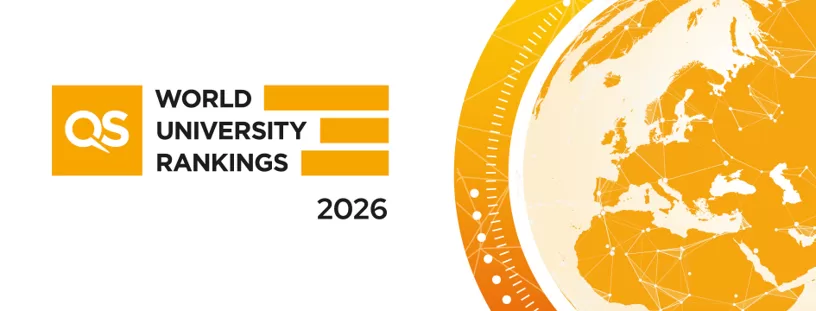
Dr Ashwin Fernandes, QS Executive Director for Africa, Middle East and South Asia, considers what higher education institutions can do to be ready for the next generation of students.
I was invited by the Royal Academy of Management in Oman during their two-day Future of Higher Education Institutions Symposium to give a talk about the future readiness of higher education institutions, and the unique position QS is in to help actualise some of those ideas.
QS are the global higher education experts. Our mission has always been to empower motivated young minds to fulfil their potential by fostering international mobility, educational achievement, and improving their career prospects. We stand as an ally to these bright minds to make the right decisions for their education, with their sights firmly on career opportunities and a brighter future.
Universities are the sandbox that students play in to become the movers and shakers of tomorrow. The right education is the first stepping stone in achieving that goal. To be ready for the next generation of students, universities have to be prepared, and start getting ready now.
How do you prepare for the future?
Higher education institutions (HEIs) play a crucial role in preparing individuals for the challenges and opportunities of the future. They are responsible for not just laying a studious foundation and critical thinking in students’ minds, but also for helping them align their life and career goals in tangible ways to make a difference to the world tomorrow.
But what sets the future-ready ones apart from the rest of the crowd? For me, there are three key differentiators.
- Embracing change: They have the ability to anticipate and adapt to emerging trends and technologies, ensuring that graduates are equipped to thrive in an evolving job market.
- Holistic education: These institutions prioritise a holistic approach to education, focusing on developing critical thinking, creativity, and problem-solving skills, alongside technical knowledge.
- Lifelong learning: A commitment to lifelong learning is central to future-readiness, with institutions offering opportunities for continuous education and skill development to meet the lifelong needs of their learners.
And where does QS come in here in this picture? We hope our suite of rankings can be used to drive change.
Rankings provide a comparative tool for assessing the relevance of educational offerings, encouraging institutions to align their curricula with current industry demands and future job market needs.
The QS World University Rankings inform institutional decision-making
QS rankings are built using data sourced directly from academics, researchers, employers, students, and independent advisory boards. The QS World University Rankings help students, parents, governments and university peers understand the strengths of these institutions, and how they achieve their goal to educate tomorrow’s human capital.
Rankings help in testing those standards against multiple parameters. QS rankings have adapted to changing educational and professional landscapes by periodically revising their methodology to reflect new academic and industry trends. For instance, in recent years, QS has started to give more weight to indicators such as “employer reputation” and “international research network,” reflecting the increasing importance of global employability and international perspectives in education.
Future-readiness factors
The Symposium I attended featured several dynamic discussions with industry leaders and policy makers from higher education, technology, innovation, management, among other industries that were present. The steps we discussed at the forum led to some great conversations, including the one I had with Dr Chung Un-chan, former Prime Minister of the Republic of Korea, and H.E. Prof Rahma bint Ibrahim Al Mahrooqi, Minister of Higher Education, Research and Innovation for the Sultanate of Oman.
These left me feeling enthusiastic for the way forward, as the HEIs in the Middle East and North Africa region are gearing up for the future in concrete ways. I saw lots of forward-thinking, adaptive, and innovative ideas at the forum.
What makes a future-ready university?
Universities are gearing up to design curricula that are flexible and responsive to changing industry demands. This may involve incorporating interdisciplinary courses, experiential learning opportunities, and emerging technologies into the curriculum.
Universities can promote a culture of lifelong learning by offering continuing education programmes, micro-credentials, and professional development workshops. This helps individuals stay relevant in their careers and adapt to evolving skill requirements.
Embracing digital technologies is crucial for future readiness. Universities need to invest in state-of-the-art infrastructure, online learning platforms, and digital resources to support remote learning, collaboration, and research.
One of the key areas of focus for future readiness of these institutions will be to encourage innovation and entrepreneurship among students, faculty, and staff. This will involve adapting a startup mindset and establishing innovation hubs and incubators to support the development of new ideas and technologies.
Creating a diverse and inclusive learning environment is essential for future readiness. Prioritising diversity in student recruitment, faculty hiring, and curriculum development to ensure that all voices are heard and valued is the foundation of the future.
Universities would do well to foster global perspectives by promoting international exchange programmes, multicultural learning experiences, and collaborative research initiatives. This helps students develop cross-cultural competencies and prepares them to work in a globalised world.
Another key principle for universities will be integrating principles of sustainability into their operations, curriculum, and research activities. This may involve adopting green technologies, reducing carbon emissions, and promoting environmental awareness among students and staff.
Utilising data-driven decision-making and predictive modelling can help universities make informed decisions about resource allocation, student support services, and academic programme development. This data-driven approach enables universities to identify trends, patterns, and areas for improvement.
These were some of the points discussed at the forum. Universities are adapting to changing world orders and stakeholder demands by focusing on four key areas: imparting of the skills needed to make students employable, providing opportunities to students to learn industry-based and relevant courses, offering graduates the right guidance in optimally aligning with job requirements, and nurturing critical-thinking skills in students to go beyond the immediate future.
Conclusion
By embracing these strategies, universities can position themselves as leaders in preparing individuals for the challenges and opportunities of the future. This requires a commitment to innovation, collaboration, and continuous improvement to stay ahead in a rapidly changing world. I am thrilled with the breadth and depth of the discussions we had at the Symposium and look forward to seeing the implementation of the many ideas that emerged from these two days.



